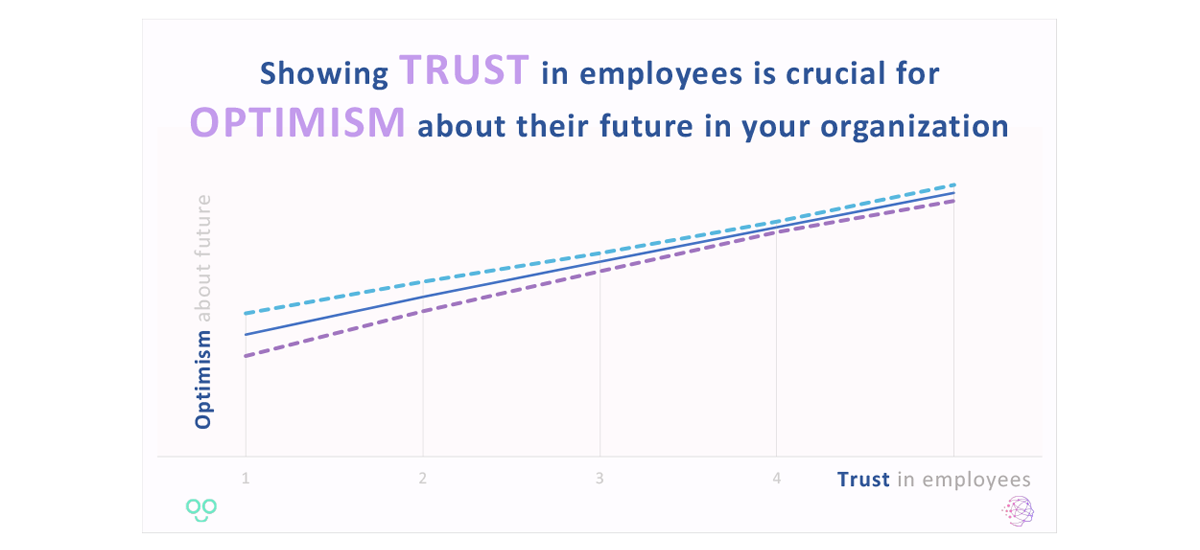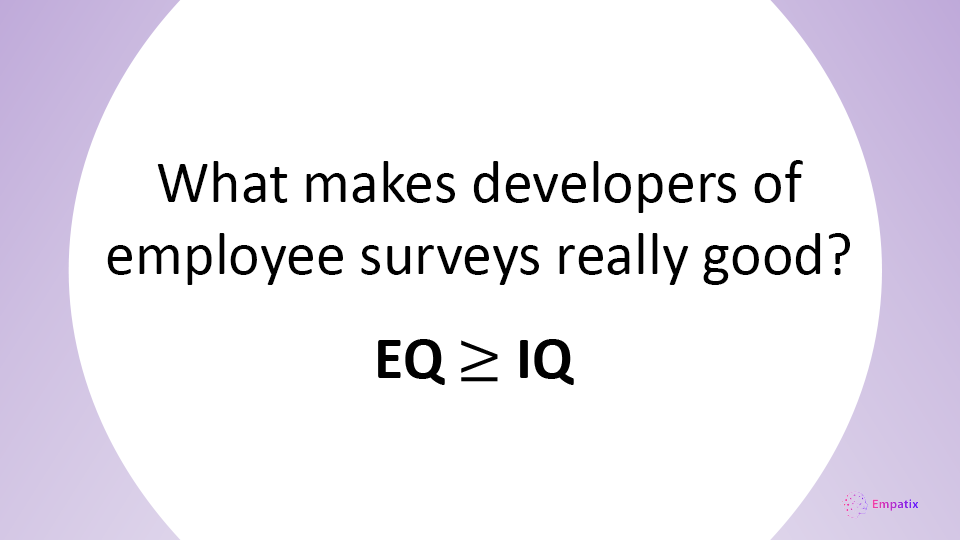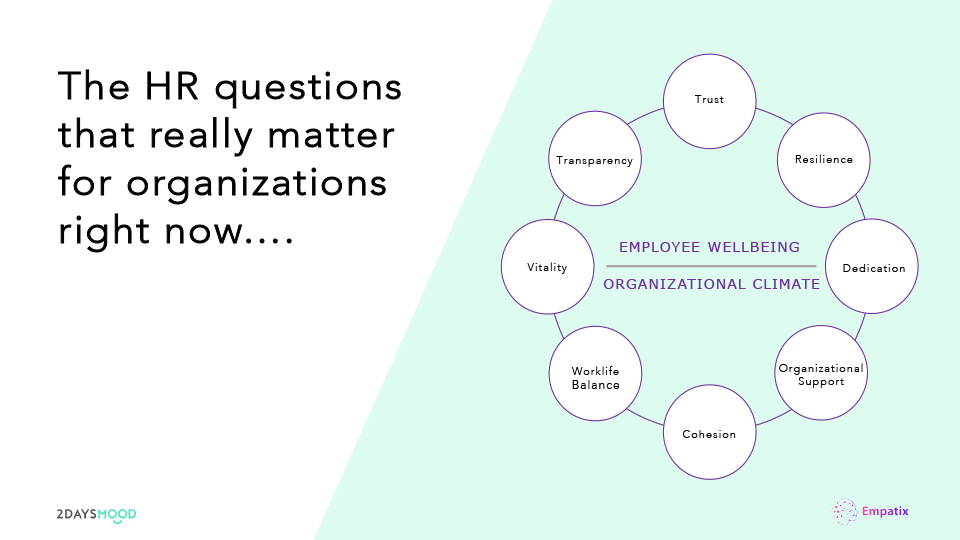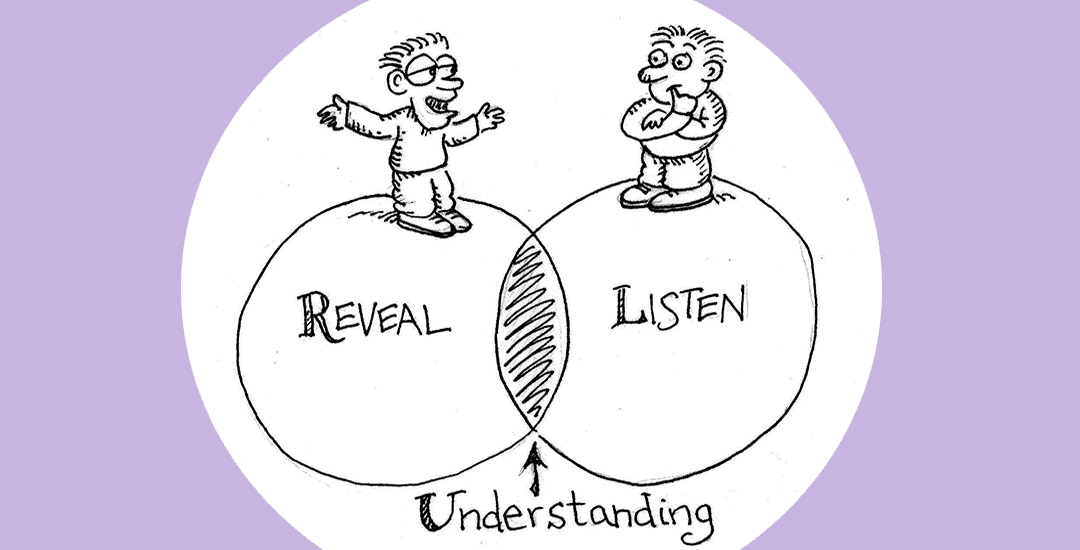We truly believe that organizations can emerge stronger from this crisis. But that means they now have to be agile and build a sustainable connected organization that also works remotely. Needless to say, leaders play a substantial role in this change.
So in a short period of time we developed a science based monitor, using our pulse survey technology, that gives continuous insight in the factors that now determine organizational climates and employees’ wellbeing.
We offer the monitor and 8 week start-up plan for FREE.
In this live blog, Daniel Blocq (PhD), Sociologist and founder of Empatix, will share updates and visual analyses of the development process and insights deriving from our monitor.
Update April 14 | New insights! This is what keeps employees optimistic.
Daniel: “Here is what keeps your employees optimistic, according to our latest research….
When the Corona crisis hit the workplace, managers were told to show an interest in employee wellbeing. They were advised to show that they cared. But what is the exact impact of displaying compassion?
Based on analysis of survey data from the Remote Experience Monitor, we discovered that compassion is important but trust is key to employee optimism and (un)certainty about their future inside an organization.
Why? An employee understands that his or her fate partly depends on the extent to which his or her manager believes that (s)he is adding value to an organization.
When a manager signals that belief, the employee will generally become more optimistic about his or her fate. Conversely, when a manager does not signal that belief, uncertainty may creep in.
Tip: Do not just put an arm around the shoulder of your employees but also signal trust!
Analysis is based on aggregated data from the Remote Experience Monitor, recently developed by Empatix and 2DAYSMOOD to help teams and organizations retrieve insights and grow stronger in this time of crisis. For details about the analysis, contact us at [email protected]. Want to gather your own insights? Request to use the Remote Experience Monitor for free.”

Update April 8 | 5 Tips to interpret Employee Survey results
Daniel: “How can in-house HR or people analytics experts create value right now? Many organizations are currently using surveys to monitor employee wellbeing. With proper statistical analysis, we can bring these surveys to life and generate meaningful insights.
5 Tips:
- Look closely at survey items. Ask yourself what a particular item really means or tells us.
- Pay attention to time. Two employees may respond differently to a survey question, not because they really feel differently, but because they filled in the survey at different moments in time (i.e., both of their moods changed over time).
- Try to connect the dots. By exploring correlations, we can start looking for drivers of employee wellbeing.
- Be cautious in interpretation and presentation. Correlation is not the same as causation. Consider and be frank about issues like the direction of causation or spurious effects.
- Bring managers into the process. It will create a sense of ownership. And it adds real value. Many questions about interpretation are a matter of logic, not just of statistical expertise.
So, be bold with care. And if you need a second opinion, feel free to contact me.

Update April 2 | What is the key to a reliable employee survey?

Daniel: “We are in a crisis today. It’s disruptive. And it’s unprecedented. But we seem to forget that it was only a few weeks ago that we were in the midst of another war… a war for talent.
The individual employee was at the center of that war. In trying to attract and retain talented employees, we focused on the employee journey, employee experience, employee happiness and personal development.
That has changed. The war for talent may return once the current health crisis is over. But we don’t know. And for now, people’s concerns and priorities have shifted. Employees wonder whether they can keep their jobs. And CEOs and managers are doing everything to make their organizations survive.
This situation calls for a new set of questions inside organizations. It calls for questions about employee wellbeing – connection, trust, organizational support, and resilience. But it also calls for questions about organizational climate. Do employees go the extra mile to overcome obstacles? And do we observe that employees are trying to help each other out when needed?
These factors are now essential to maintain or develop a strong (remote) culture.”
Update 31 March | The factors that are now essential in your (remote) organizational climate

Daniel: “Empatix and 2DAYSMOOD want to help you answer these questions for your organization through a free pulse survey – a tool that includes a dashboard and that allows you and your organization to closely monitor employee wellbeing and organizational climate.
PS 1. Free does not mean poor quality. We come from academia and if there is one thing we value, it’s reliable instruments and good data. More information about the validity and reliability of the instrument will follow in the course of this week.
PS 2. Free also does not mean cheap marketing. This product was born out of a joint desire to help other organizations. Surveys, data collection and data analysis is what we are good at and thus the best way to show solidarity. For those who already know us and our personal histories that’s obvious. For others… we hope that you will use the tool, interact with us, and learn firsthand that we are for real.
PS 3. In order to make a positive contribution to the world, we also want to donate all aggregated anonymized data from our monitor to research. The purpose of this is to analyze and learn from the impact the global pandemic has on organizations.”
